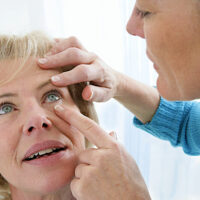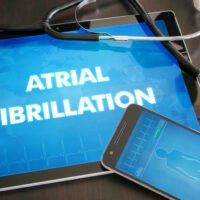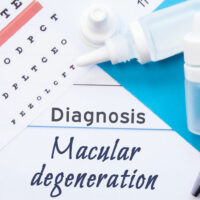Foods to avoid and foods to eat for bone health

Strong and healthy bones are essential for mobility, protecting vital organs, and maintaining a strong skeletal framework. While many factors can influence bone health, such as genetics, physical activity, and hormonal balance, food also plays a crucial role. Essential nutrients, including calcium, vitamin D, phosphorus, magnesium, and others, help in maintaining bone health, while certain foods, if consumed excessively, may weaken bones. Here are some of the best and worst foods for bone health.
Foods that weaken bone health
High-sodium foods
Excessive sodium intake can lead to calcium loss and ultimately weaken the bones. Consuming about 2,300 milligrams of salt leads to a loss of about 40 milligrams of calcium from the bones. On average, however, an average adult person in the country consumes about 5,000 milligrams of salt each day. Some obvious salt-rich snacks include pretzels, potato chips, canned soups, and processed meats like bacon, sausages, and hot dogs. While one can control the amount of salt added to one’s cooking, several products contain hidden sodium. For example, pre-packaged and ready-to-cook frozen meals are usually high in sodium to extend their shelf life and improve taste. Even some condiments and sauces like soy sauce, ketchup, barbecue sauce, and salad dressings can have hidden sodium. So, it is important to read food labels and make better lifestyle choices to reduce sodium intake.
Soft drinks
Carbonated soft drinks, including soda and energy drinks, contain phosphoric acid and caffeine, which may lead to decreased calcium absorption and increased calcium excretion. In addition, these drinks are high in caffeine and phosphorus, which have been associated with bone loss. High consumption of these beverages, especially in place of milk or other calcium-rich options, can negatively affect bone density over time.
Excessive caffeine
While caffeine is not inherently harmful to bone health, excessive caffeine intake can interfere with calcium absorption. Caffeine is commonly found in coffee, energy drinks, and some teas. It’s advisable to consume caffeine in moderation and balance it with calcium-rich foods.
Sugary foods
Sugar can lead to increased inflammation in the body, which can, in turn, harm bones. Additionally, sugary foods and drinks often replace healthier options that provide essential bone-building nutrients. Some of these include cakes, pastries, cookies, ice cream, candies, flavored yogurts, fruit juices with added sugars, desserts, and more.
Legumes
Legumes or beans are packed with numerous nutrients, including fiber and protein, but they also contain phytates, which are substances known to interfere with calcium absorption. To lower the phytate level in the legumes, one is advised to soak beans in water overnight, eliminate the soaked water, and use fresh water while cooking.
Hydrogenated oils
The process of making these solidified vegetable oils destroys the essential vitamin K, which is an important nutrient for bone health. One can avoid these and use canola and olive oil instead, which are considered to be among the best sources of vitamin K.
Foods that strengthen bone health
Dairy
Dairy products have long been celebrated as bone-friendly foods. Low-fat and nonfat milk, yogurt, and cheese are rich sources of calcium, which is a fundamental mineral for bone health. These dairy items also come fortified with vitamin D, another key nutrient that aids in calcium absorption and bone strength.
Fish
Canned sardines and salmon, especially when consumed with their bones, provide a significant dose of calcium. On the other hand, fatty fish varieties like salmon, mackerel, tuna, and sardines are excellent sources of vitamin D. This combination of nutrients makes fish a valuable addition to bone-boosting foods.
Leafy greens
Leafy greens take center stage when it comes to calcium-rich foods that don’t rely on dairy. Collard greens, turnip greens, kale, okra, Chinese cabbage, dandelion greens, mustard greens, and broccoli are packed with calcium, offering plant-based alternatives for those seeking to strengthen their bones without consuming dairy products.
Oranges
Oranges are a rich source of multiple nutrients beneficial for bones, particularly potassium and vitamin C. Potassium aids in neutralizing acids that can lead to calcium loss from the bones. Moreover, the vitamin C found in oranges plays a crucial role in collagen production, which is essential in bone health.
Magnesium- and potassium-rich foods
Both these nutrients play a critical role in bone health, and certain foods are abundant in these essential minerals. Spinach, potatoes, sweet potatoes, raisins, plantains, and tomato products are rich sources of both potassium and magnesium. On the other hand, one can incorporate other magnesium-rich foods like collard greens, beet greens, okra, and potassium powerhouses like bananas and papaya into one’s daily food intake to ensure strong bones and overall well-being.
Prunes
Prunes are a nutritional powerhouse replete with vitamin K, potassium, and magnesium. Eating prunes regularly can be an excellent way to fortify bones and ensure overall skeletal well-being.
Fortified foods
These specially enriched products are infused with essential nutrients like calcium and vitamin D, which are essential for maintaining strong and resilient bones. Incorporating fortified foods, such as fortified cereals and plant-based milk alternatives, into one’s daily food intake can be a convenient and effective way to bolster bone health.
What else affects bone health?
Bone health is often influenced by a combination of factors beyond one’s food choices. Here are some of the activities known to be detrimental to one’s bone health:
Biking
While biking is an enjoyable and cardiovascular activity, it is not considered a weight-bearing exercise. Unlike walking, running, and hiking, which stimulate new bone tissue formation, biking does not have the same positive impact on bone density. So, one can consider complementing their biking activity with other exercises to maintain optimal bone health.
Staying indoors for extended periods
Spending prolonged time indoors, particularly with limited exposure to natural sunlight, can affect bone health. Sunlight is a primary source of vitamin D, which is crucial for calcium absorption and bone strength. A lack of sunlight exposure can lead to vitamin D deficiency, potentially impacting bone health. Hence, it is essential to strike a balance between indoor and outdoor activities and have balanced meals for the overall well-being of one’s bones.





